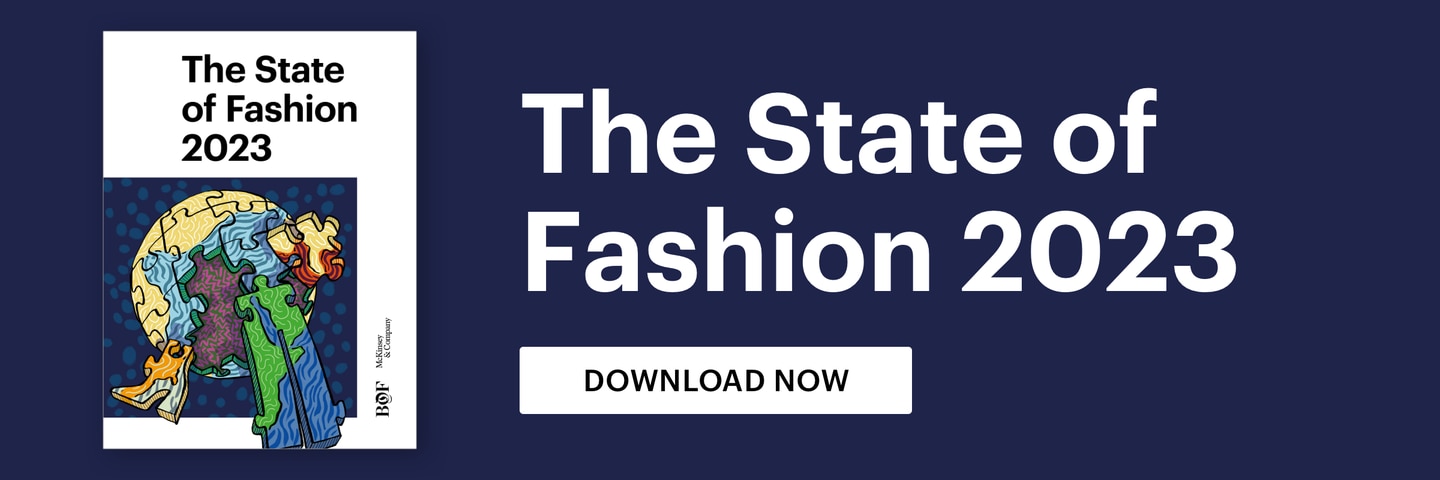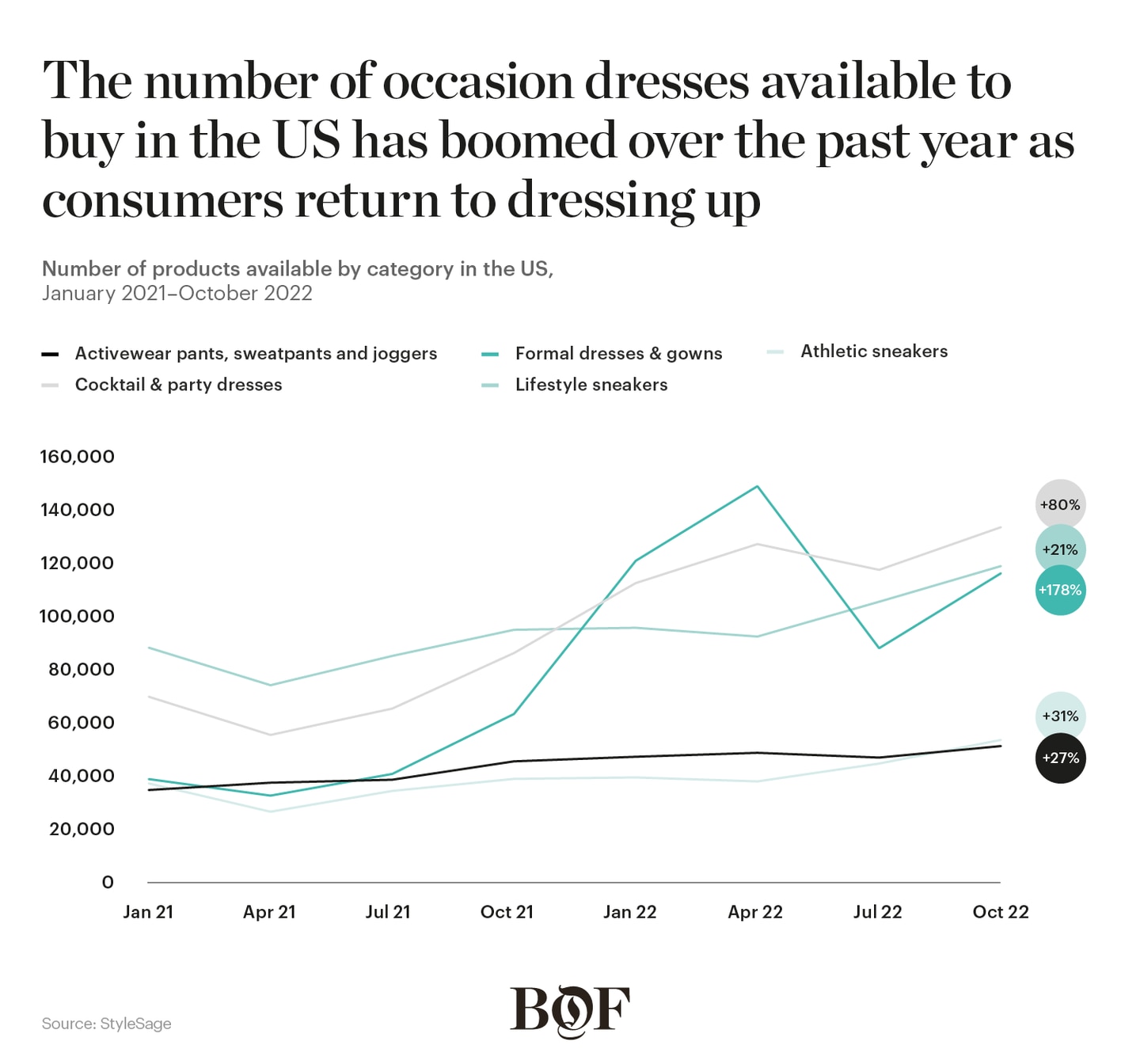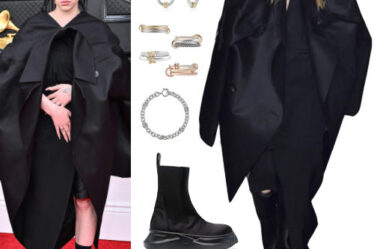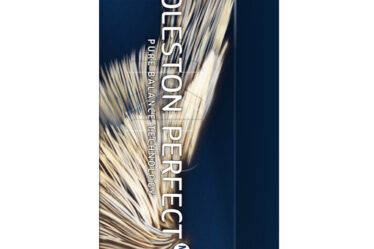
Not so long ago, people segmented their wardrobes for leisure activities, business events and family celebrations. But now, the lines between the dress codes for many of these occasions have blurred, leaving fewer events that require what was traditionally considered formalwear, such as suits and long dresses.
As a result, differences in preferences for the clothes people wear at offices and evening events as opposed to upscale, special occasions, are becoming even more pronounced. For day-to-day wear, “smart” or “power casual” are the dominant styles, characterised by versatile clothing that can be dressed up or down. And when customers do dress formally, many are embracing more creative styles, choosing unconventional fabrics, bold colours and statement pieces that stand out in their wardrobes and on their social media feeds. Though these dress code shifts are playing out across gender categories, the evolution may be more visible in men’s assortments and merchandising, as the relevance of traditional suiting declines.
As these dress codes crystallize, brands across the market may have a unique opportunity to guide customers towards new products, materials and shapes that reflect modern lifestyles.
On the Rebound
While the size of the formalwear market is difficult to measure due to the breadth of the category, the space can be divided into three groups: office wear, including business suits and smart footwear that are worn in workplaces; evening wear, or smart casual and cocktail attire, like dresses, heels and blazers; and occasion wear, such as the tuxedos and gowns worn at special ceremonies or celebrations.
Formalwear is showing signs of a rebound after pandemic-induced disruptions. In Europe and the US, retail sales of shirts and blouses, non-denim trousers and skirts are projected to grow at a faster rate between 2022 and 2026 than they had in the 10 years before the pandemic, according to Euromonitor.
But concerns of economic gloom that may be on the horizon may hold the market back in 2023. For office and evening wear, this may mean consumers start repurposing garments for multiple occasions. In contrast, occasion wear at the most formal end of the category is expected to be more resilient, reflecting some of the patterns apparent during previous recessionary periods, like that of the early 1980s, when American department stores reported that high-end evening clothes were among the only categories that remained in relatively high demand.
According to the BoF-McKinsey State of Fashion 2023 Survey, 39 percent of fashion executives expect sales of occasion wear to be among the top three growth categories in 2023. Meanwhile, fewer executives s opportunities for office wear, with 27 percent stating they expect business attire to be among the top three categories set to grow next year.
Putting Fashion to Work
Even before the pandemic and the hybrid-working paradigm of today, office attire was relaxing. Hoodies, jeans and sneakers became increasingly acceptable in many offices. Even banks and professional services firms — with entrenched suit-and-tie cultures — have acknowledged that office dress codes need modernising. In 2019, Goldman Sachs announced a firm-wide flexible dress code, encouraging employees to use their judgment when deciding whether they should, or should not, ditch their suits for a more casual look.
In women’s wardrobes, where dresses have long ruled both office and evening wear, a new take on the pant suit emerged in 2022. Labels such as J.Crew and The Frankie Shop showcased oversized suits and trousers in soft materials for customers looking for polished, fashionable but comfortable styles. Workwear label M.M. LaFleur has honed its “power casual” category of structured knit tops and washable twill trousers. The brand said in early 2022 that its power casual styles were generating triple the sales of dresses that used to drive about a third of the company’s sales prior to the pandemic.
In the men’s market, brands that traditionally focused on formalwear for work and evening are rethinking old approaches to keep up with changing consumer tastes. Italian luxury label Zegna produced a relaxed take on daily attire in its Autumn/Winter 2021 campaign, which it calls “luxury leisurewear,” offering versions of its signature tailoring in jersey knits and other soft fabrics. Similarly, labels like Kiton and Brioni have effectively shifted their focus from traditional work wear and suits towards hybrid pieces that can function well across activities — a style some are calling “smartorial.” Consumers are updating their wardrobes to reflect these blurred lines between leisure wear and work wear, with worldwide Google searches for “smartorial” doubling between January and September 2022.
Apparel with hybrid details that bridge formal and casual attire — such as formal cuts in comfortable materials that often incorporate performance fabrics, like sweat wicking or stretch — are also in high demand. For example, cashmere joggers from Burberry and Loro Piana or linen and crochet shirts from Jil Sander and Jigsaw can be dressed up or down depending on the occasion.
Wherefore the Black Suit
Where does the shift in workwear leave suits? The popularity of suits was already declining before the pandemic, especially in the US, Western Europe and Latin America. In the UK, spending on men’s suits dropped from £377 million (about $425 million) in 2019 to about £240 million in 2021. In March 2022, the UK’s Office for National Statistics removed men’s suits from its basket of goods to calculate the cost of living for the first time since 1947.
Suit makers Hugo Boss and Brooks Brothers have relaunched their brands with a focus on athleisure and upscale streetwear. Other suit makers are pivoting from black and grey to suits in bold colours. On London’s Savile Row, the likes of Anderson & Sheppard and Edward Sexton have reported an increase in sales of colourful suits and those in lighter fabrics. Black suits represented 25.8 percent of suits for sale online between September 2018 and September 2019, compared with 19.3 percent between September 2021 and September 2022, according to retail tracking firm Edited. Pink, green and orange are among the more popular new hues.
The dress code shift also translates to customers buying separates rather than two- or three-piece suits. “We have noticed that the customers who always bought a suit from Zegna and Tom Ford are now buying separates from the same brands,” said Dean Cook, head of menswear buying at British department store Browns. “The brands are also aware of this and have diversified their [offerings], appealing to a customer who is maybe working from home with the necessity for something smart but with a different aesthetic.”
With this, suit prices are declining. In the UK, the average price for a suit fell 75 percent year on year in July 2020 to approximately £200 on average, according to trend forecasting company WGSN.
To be sure, a traditional, structured suit still has a place in modern wardrobes, but in many parts of the world, its use is confined to a smaller selection of formal occasions. In the Middle East, black suits remain popular in day-to-day dressing, as well as in Asia: in China, suits have recently become symbols of job security for some. But in many cases, traditional suits can no longer merit the entire focus of a fashion business.
Making a Statement
Unlike for office and evening wear, when customers dress up for the most formal occasions versatility and comfort are expected to become less of a factor in purchase decisions. Instead, shoppers may look for statement-making and unique items that will stand out, making occasion wear a ripe space for higher-end, specialised brands that can meet the desire for playful indulgence. For example, Elie Saab is among the brands now offering made-to-measure or couture suits for men to capitalise on a growing business for creative and personalised attire. Meanwhile, UK-based department store chain Flannels has opened a tailoring hub that allows shoppers to buy pieces made to order, as menswear silhouettes move beyond streetwear to a more tailored look.
The shift is visible in women’s apparel and footwear, too. The number of cocktail and party dresses as well as formal dresses and gowns for sale in the US between January and October 2022 increased by 80 percent and 178 percent respectively compared to the same period in 2021, according to market intelligence platform StyleSage. Searches for platform heels have spiked 75 percent between 2021 and 2022. At luxury retailer MyTheresa, growth in shoe sales has been driven by parties and other occasions, with popular brands including Amina Muaddi, whose sought-after avant-garde square-heeled shoes have helped the company grow into a $55 million brand.
Meanwhile, dresses have also garnered attention at more accessibly priced retailers. Asos reported sales of 100,000 party dresses in 2021. Abercrombie & Fitch added a “best dressed guest” category to its website in 2021, helping it to sell more dresses than ever before in the brand’s history.
For occasion wear, many customers will rent special pieces they do not anticipate wearing more than a few times, or turn to resale platforms to source luxury items. The rental market is projected to be worth $2.1 billion by 2025, with growth driven in part by demand for elegant outfits. According to a 2022 Kantar survey, shoppers were more likely to rent men’s and women’s formalwear than any other apparel or accessories category.

Two Diverging Markets
As brands navigate dress codes and expectations around formal attire, they may need to rethink their assortments to address two markets: versatile, polished but casual everyday apparel and statement-making special occasion attire. Brands can take into account how use cases drive shoppers to make purchases; consumer surveys and focus groups should be essential to understanding changing preferences and reflecting those desires in design and merchandising strategies.
Brands that want to cater to office and evening wear should consider how, across the market, shoppers will increasingly turn towards multi-purpose wardrobe staples that balance an upscale appearance with comfort and ease. These types of separates will likely be easily mixed into a variety of dress codes, offering a range of casual to relaxed formal combinations. Merchants and marketers should message multi-purpose pieces carefully, so shoppers understand their range and versatility.
Designers that seek to serve special occasion wear, however, can deprioritise versatility and invest in differentiating their collections to excite customers when they are ready to swap their soft separates and athletic apparel to buy — or rent – something more memorable.
This article first appeared in The State of Fashion 2023, an in-depth report on the global fashion industry, co-published by BoF and McKinsey & Company.




